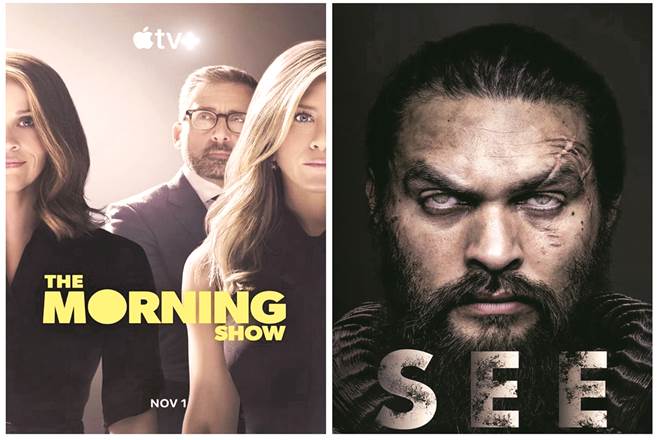Sample this: Apple throws its hat into the ‘streaming content’ ring, with its newly launched Apple TV+. Its initial offering? A dozen or so originals featuring prominent showbiz names — Jennifer Aniston, Reese Witherspoon, Oprah Winfrey, Steven Spielberg, et al — each month at an ‘affordable price’ of $4.99 per month (Rs 99 per month in India).
Then there’s Disney+, the streaming offering from The Walt Disney Company, which launched on November 12 in the West. With a content library comprising Marvel, Pixar, Star Wars and National Geographic titles, the streaming platform is priced at $6.99 per month. In India, however, this is not likely to be a separate offering — Disney titles are being made available on the homegrown Hotstar, with no change in subscription plans, as of now.
To add more to the streaming plot mix, there’s HBO Max which will launch in May 2020 in the US and Canada, at $14.99, followed by other markets. Mind you, this is in addition to its other offerings like cable subscription oriented add-on service HBO Go and existing streaming platform HBO Now. Clearly, HBO’s content offering seems to be quite a complex ‘game of thrones’ in itself; may the best platform win. Within its own content universe, that is.
But where does all this leave existing content behemoths like Netflix and Amazon Prime Video? And, will this have any implications at all on the over 35 local OTT (over the top) platforms in India?
Game of originals
The status quo may not change right away, but the wheels are turning slowly. “What’s more, with such stupendous TV viewership, broadcaster OTT isn’t going anywhere. However, OTT platforms by production houses, for example, may run out of steam or get acquired,” says Paritosh Joshi, principal, Provocateur Advisory.
On the content front, the name of the game seems to be ‘originals’ as of now. Netflix’s recent announcement to raise $2 billion to fund original content is probably a sound Plan B, with the imminent threat of Disney pulling out its content from Netflix. To encourage binge-watching, Netflix is also experimenting with video streaming speeds and lighting controls on select Android devices, which is causing a ripple of protests in the world of studios.
Meanwhile, Apple TV+ has been slammed for having a bite-sized, originals-only slate, without licensed titles to supplement its content repertoire. Furthermore, the platform is a bit device-specific, currently. “One can’t underestimate the power of libraries,” observes a media analyst. “Dependence on originals alone can be risky unless backed by huge investments. Here, one can clearly see who is a content player already and who is trying to be one.”
Too many cooks?
Over the next two years, a shakeout is being predicted across markets including India, with well-funded, large platforms poised to swallow the smaller ones. Moreover, bundling deals are getting popular by the day — the kind Verizon and Disney have inked to offer a year-long free subscription. Disney is also looking at striking lucrative deals with Apple, Amazon and Google for the distribution of Disney+ content, and isn’t too worried about Apple TV+ undercutting its pricing. As Disney’s CEO Bob Iger told CNBC recently, “We’re not really worried about competition in terms of pricing because we have such a unique product. So, while we view the others as competition, we’re not fixated on the competitive side of things here.”
Meanwhile, Netflix reportedly told its shareholders in a quarterly letter that “the upcoming arrival of services like Disney+, Apple TV+, HBO Max and Peacock is increased competition, but we are all small compared to linear TV”. Well, it would seem that sleep is no longer the only competitor for the streaming giant.
